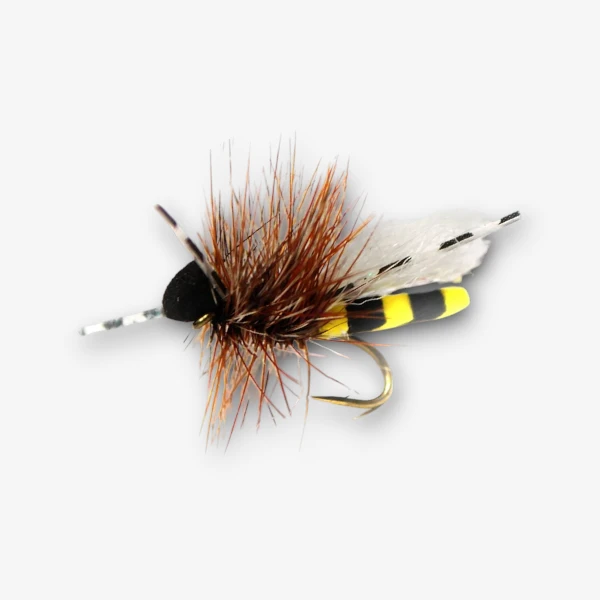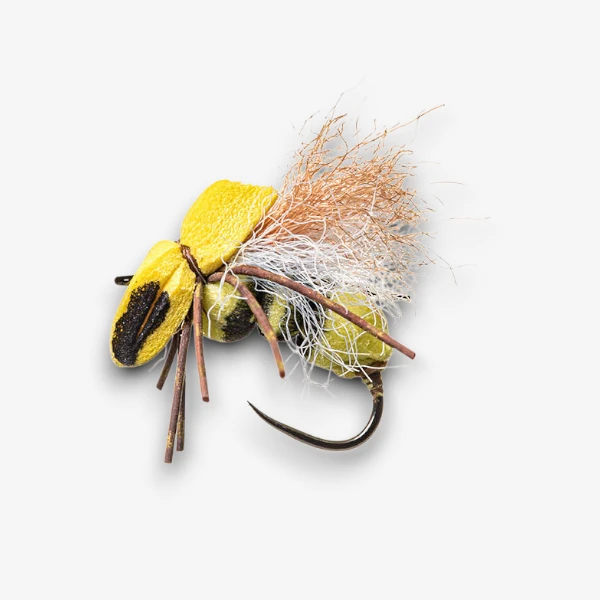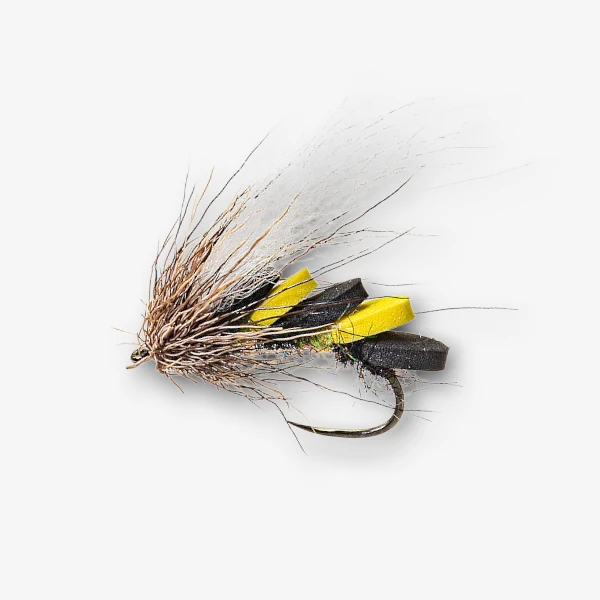Bee - Wasps
Description
Overview: Bees and wasps both order Hymenoptera. Although not aquatic, both bees and wasps can become important food sources for fish when they accidentally fall into the water. Bees tend to have a stocky, fuzzy body, while wasps are more slender and smooth. Bees are generally larger than wasps, with many species measuring around 0.5 to 1 inch. Wasps, in contrast, are more elongated with distinctive black and yellow markings. These insects, especially in their drowned form, are highly attractive to fish, particularly predatory species like trout. Anglers often use fly patterns that imitate the adult insects' size and shape, with bees appearing bulkier and wasps having a sleeker profile. Drowned versions of both insects are also effective when the insects fall into the water after flying or due to wind. Hook sizes for bee and wasp imitations typically range from 10 to 16.
Nymph/Drowned: Bees and wasps do not have a true nymph stage, as they are not aquatic insects. However, they can be effectively fished in their drowned form. Drowned bees and wasps often appear bloated, with their wings spread out and body swollen from absorbing water. These insects can be a key food source for fish, particularly when drifting in currents or in slow-moving water. Fly patterns for drowned bees and wasps are designed to mimic this waterlogged state, often using foam or other buoyant materials to ensure the fly floats naturally. Hook sizes for drowned patterns generally range from 10 to 16.
Dry/Adult: For the adult stage, bee and wasp patterns replicate the insects' active or struggling forms on the surface of the water. Bee patterns are typically larger with a round, fuzzy body, while wasp patterns are more elongated and smooth, with distinct black and yellow markings. Bee flies are usually tied with hook sizes from 10 to 14, while wasp imitations tend to use hook sizes from 12 to 16. These patterns are best fished during warm months, with wasps being more common in late summer and bees in early fall.


